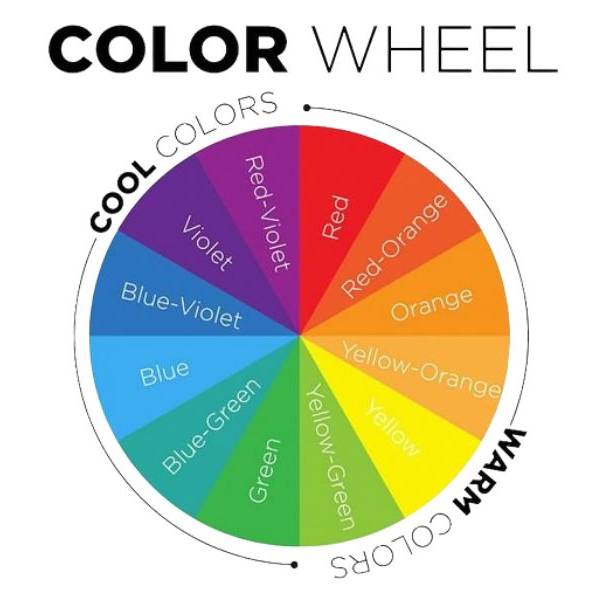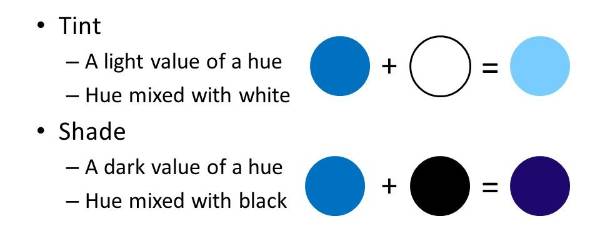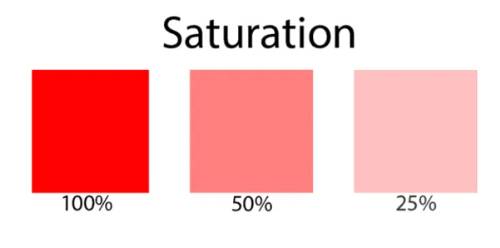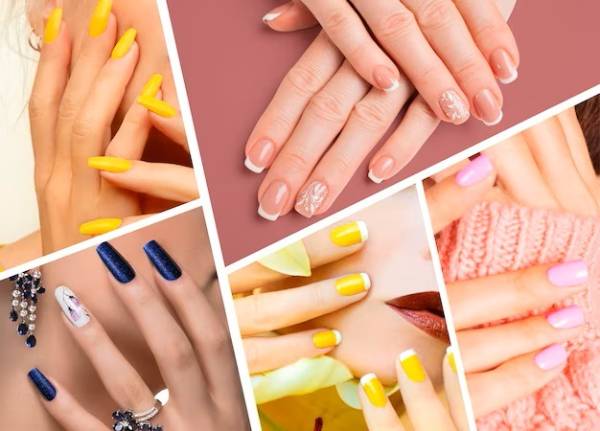Building on the four seasonal color types introduced earlier [Find Your Perfect Seasonal Color Palette], you’re likely brimming with newfound knowledge about your beauty season. But the journey doesn’t end there!
This guide delves deeper, equipping you with color-matching techniques for clothing, lipsticks, and even nail polishes. By the end, you’ll have a comprehensive understanding of your ideal color scheme. Let’s dive in!
Warmth and Coolness of Hue
Sure, your skin tone leans warm or cool, but that doesn’t restrict you to a limited color palette. The key lies in finding the perfect warm or cool variation within each color. For instance, if your undertones are warm, embrace warmer shades of blue and green.

Take a look at Figure 1. It showcases a cool-toned blue compared to the warm-toned blue in Figure 2. Similarly, Figure 3 features a cool red, while Figure 4 displays a warm version.
Cool colors evoke a sense of rationality and intelligence, while warm tones exude warmth, softness, and brightness. Spring and autumn types naturally gravitate towards warm tones, while summer and winter types find cool tones more flattering.
Decoding Warmth and Coolness in the Color Wheel
Now, let’s explore the intricacies of the color wheel. Orange-red leans warm, whereas purple-red leans cool. Yellow with an orange tinge is warm, while greenish-yellow falls on the cool side. Blue-green is undoubtedly cool, while yellowish-green leans warm.
Finally, reddish-purple exudes warmth, while bluish-purple feels cool. Mastering this distinction empowers you to choose colors that harmonize perfectly with your unique coloring.

Lightness and Darkness of Colors
The lightness or darkness of a color, also known as brightness, depends on whether it’s mixed with white, gray, or black. High-brightness colors flatter spring and summer types, while autumn and winter types look stunning in lower-brightness tones.

Color Intensity
Color intensity, or purity, refers to the concentration of color pigments within a shade. The higher the concentration, the higher the purity (think vibrant red).
Conversely, a lower concentration results in lower purity (think muted red). For example, red with 20% saturation is a low-purity red, while 50% is medium, and 80% is high purity.

Let’s put theory into practice!

The combination in Figure 1 is a cool and vibrant color scheme suitable for winter types.
The top and bag in Figure 2 belong to an autumn color combination, with warm, dark, and soft green tones, while the jeans belong to the blue of the summer type. The entire outfit is a combination of autumn colors.
Figure 3 features a combination of summer and autumn colors. The top color belongs to the summer type, with a hint of autumn color, creating a clash of colors between the autumn and summer types, which is very harmonious and beautiful.
Remember: Identifying your seasonal type isn’t a rigid formula. It empowers you to find a core color palette that complements you best. Don’t hesitate to incorporate accents and complementary pieces from other seasons to create a harmonious and personalized look.
Selecting the Perfect Lipstick Shade

- Spring: Embrace warm, vibrant, and bright hues like coral and strawberry.
- Summer: Opt for cool, soft colors with a touch of brightness, like apricot and peach.
- Autumn: Luxuriate in dark, warm, and soft tones such as cinnamon milk tea and chocolate red-brown.
- Winter: Make a statement with cool, vibrant shades with a hint of darkness, like raspberry, cherry, and deep tomato red.
Nailing the Perfect Mani

- Spring: Unleash your playful side with lively, cute, and warm colors. Don’t be afraid to experiment with mix-and-match manicures for a trendy yet adorable look that avoids appearing too mature.
- Summer: Keep it natural with nudes, very light pinks, pinkish green, pinkish blue, nude pink, and transparent colors. Steer clear of overly contrasting colors and embrace subtle, natural contrasts. Avoid overly bold, dark, or bright shades.
- Autumn: Channel your inner royalty with warm burgundy tones and luxurious golden French tips.
- Winter: Exude confidence with high-contrast and bold colors like black, silver, and leopard prints.
Final Words
Understanding your seasonal color palette is a game-changer for your wardrobe. It empowers you to make choices that enhance your natural beauty, regardless of whether you’re a warm spring or autumn, or a cool summer or winter.
By embracing your unique color spectrum, you’ll elevate your style and create a wardrobe that reflects your true essence. So, delve into the world of seasonal hues and witness the transformation!
